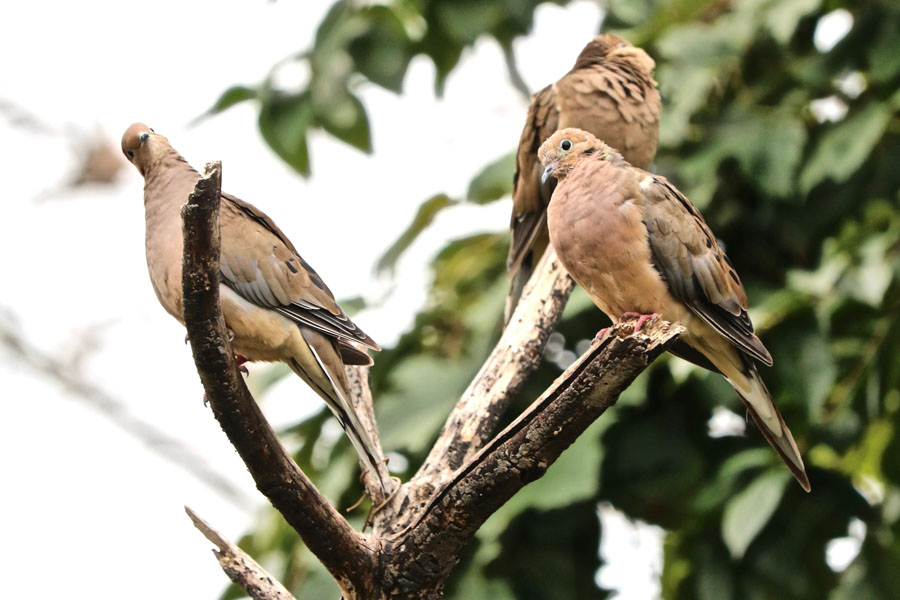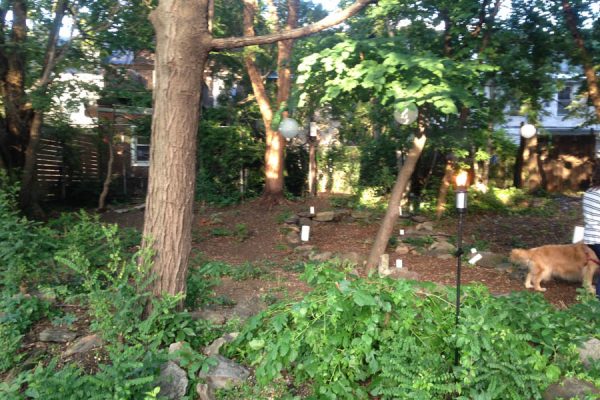Urban Birding in the Riverwards: Mourning Doves — Subtle Beauties
Are you feeling lonely? Has the change in seasons gotten you down? Are you already dreading a cold winter? Here’s a suggestion. Go birding. Or rather, don’t “go” anywhere. Put a feeder up in your backyard and watch those little dinosaurs go to town. I promise you, that you will get so caught up in the day-to-day life of the birds in your backyard that you will find yourself within a couple of weeks buying binoculars and guidebooks, scolding squirrels, and looking forward to visits from your favorite feathered friends.
Each month, I am going to feature a common urban bird. Birds that you can spot in local parks, your backyards, and nesting in buildings. Birds are everywhere; they are fascinating creatures and many of them thrive in urban environments. If you are thinking, “Oh great, a column about sparrows and pigeons,” well then, you aren’t paying attention. Many birds make their homes in the city. I have a pair of cardinals that nest in a neighbor’s mulberry tree. They visit my feeder regularly. I first noticed them this past winter when there was just a male and female, a bonded pair. This spring they had a clutch and now their babies have fledged. I see the little guys and gals at my feeder, awkward and gray already with their tell-tale crests. Their mother keeps a strict eye on them. If you live in Fishtown maybe you have noticed the red-tailed hawks that feed on the pigeons in Palmer Park? In the spring, red-winged blackbirds can be heard everywhere, singing their harsh song. Don’t forget about the persistent hammering of woodpeckers at Palmer Cemetery.
My favorites are the mourning doves — called mourning doves because of that ubiquitous, sad song that unmated males sing at sunrise and sunset — it truly does sound mournful and there is no mistaking it. I’ve heard many people call them dumb, but they are no dummies. People often confuse gentleness with stupidity, but there is a strength in being gentle that we seem to have forgotten about in our uber-ironic milieu. Because the mourning doves are gentle and slow to startle, they are easily hunted. In fact, in some parts of the country they are hunted en masse. The slaughtering of a centuries-old symbol of peace in droves makes my stomach churn. Surely this tells you something about the state of things. Don’t call my mourning doves stupid (when you bird, you find yourself becoming a little possessive of your birds). Mourning doves have adapted to life in the city, the country, even the desert. They are the most common bird in North America; prolific breeders laying up to six broods a year with each brood consisting of two eggs. Their babies grow at an alarming rate and mourning doves are good parents. They rarely leave their babies alone in the nest and they are an anomaly in the bird world. They produce something called “crop milk.” Only doves, pigeons and, of all things, flamingos and some species of penguins produce crop milk. Both female and male doves produce crop milk and like human milk it is a highly nutritious secretion. Birds being birds, though, don’t have mammary glands so this is produced in their crop. A crop is a specialized part of the esophagus that has evolved to store extra food. Doves use it to actually MAKE food: baby food.
Look for doves everywhere in the Riverwards. They are usually on the ground because that is where they feed. They frequent vacant lots, parks, and backyards. If you have a bird feeder you will notice they love to clean up after other birds. They are graceful, subtle birds, not flashy at all, but beautiful and curvy with a slight sheen to their feathers. Their eyes are lined with a beautiful sky-blue color. Males usually have a favorite perch where they survey the area around them and make their mournful coo—Cooo-OOOOh-oooh-ooooh-ooooh. If you hear that sound, you may mistake it for an owl, but I suggest you look upwards to the telephone wires where one is sure to be perched and cooing his little heart out. When they take to the sky their wings make a loud whistle and once they are in flight they are remarkably fast fliers, graceful and speedy, like their pigeon cousins. If you are lucky enough to see mourning doves in the nest, surely, you will fall in love with their little squabs. There are always two and they are funny-looking, fuzzy beasts. Guidebooks usually point out that their nests are “messy affairs” or even according to an old edition of “Audobon’s The Birds of America”, “poor apologies for a nest”, but they are good parents, lovingly feeding their squabs milk, so who cares if they aren’t good housekeepers? They have other things to do. If you’ve ever glimpsed a mourning dove illuminated in the golden hour, high on his perch, cooing, then you know why these subtle beauties are my favorites.










